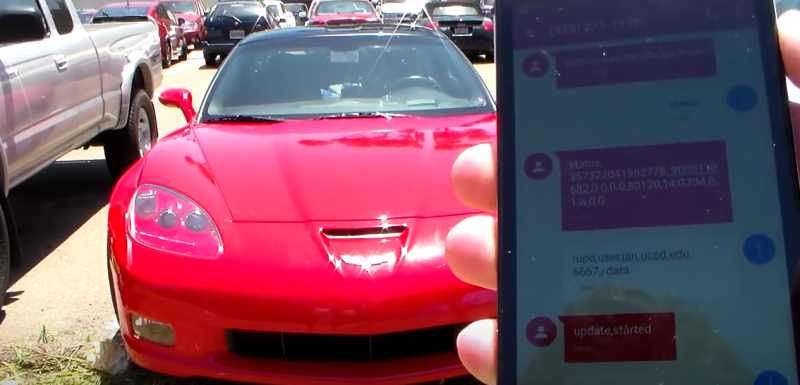Small devices installed in many automobiles allow remote attackers to hack into a car’s systems and take control of various functions, researchers have demonstrated.
Researchers at the University of California in San Diego analyzed commercial telematic control units (TCU) to determine if they are vulnerable to cyberattacks.
TCUs are embedded systems on board a vehicle that provide a wide range of functions. The products offered by carmakers, such as GM’s OnStar and Ford’s Sync, provide voice and data communications, navigation, and allow users to remotely control the infotainment systems and other features.
Aftermarket TCUs, which connect to the vehicle through the standard On-Board Diagnostics (OBD) port, can serve various purposes, including driving assistance, vehicle diagnostics, security, and fleet management. These devices are also used by insurance companies that offer safe driving and low mileage discounts, and pay-per-mile insurance.
Researchers have conducted tests on C4E dongles produced by France-based Mobile Devices. These TCUs, acquired by the experts from eBay, are used by San Francisco-based car insurance firm Metromile, which offers its per-mile insurance option to Uber.
Aftermarket TCUs are mostly used for data collection, but the OBD-II port they are connected to also provides access to the car’s internal networks, specifically the controller area network (CAN) buses that are used to connect individual systems and sensors.
“CAN is a multi-master bus and thus any device with a CAN transceiver is able to send messages as well as receive. This presents a key security problem since as we, and others, have shown, transmit access to the CAN bus is frequently sufficient to obtain arbitrary control over all key vehicular systems (including throttle and brakes),” researchers explained in their paper.
The experts have identified several vulnerabilities in the Mobile Devices product, including the lack of authentication for remotely accessible debug services, the use of hard-coded cryptographic keys (CVE-2015-2906) and hard-coded credentials (CVE-2015-2907), the use of SMS messages for remotely updating the dongle, and the lack of firmware update validation (CVE-2015-2908).
In their experiments, researchers managed to gain local access to the system via the device’s USB port, and remote access via the cellular data interface that provides Internet connectivity and via an SMS interface.
In a real-world demonstration, the experts hacked a Corvette fitted with a vulnerable device simply by sending it specially crafted SMS messages. By starting a reverse shell on the system, they managed to control the windshield wipers, and apply and disable brakes while the car was in motion. The experts said they could have also accessed various other features.

The remote attacks only work if the attacker knows the IP address of the device or the phone number associated with the SIM card used for receiving SMS messages. However, researchers determined that Internet-accessible TCUs can be identified by searching the web for strings of words unique to their web interface, or by searching for information related to the Telnet and SSH servers. Thousands of potential TCUs were uncovered by experts using this method.
As for the the SIM phone numbers, researchers believe many of them are sequentially assigned, which means an attacker might be able to obtain the information by determining the phone number for one device.
Researchers have reported their findings to Mobile Devices, Metromile, and Uber. Wired reported that Mobile Devices developed a patch that has been distributed by Metromile and Uber to affected products.
Mobile Devices told the researchers and the CERT Coordination Center at Carnegie Mellon University that many of the vulnerabilities have been fixed in newer versions of the software, and claimed that the attack described by experts should only work on developer/debugging devices, not on production deployments.
However, researchers noted that they discovered the vulnerabilities on recent production devices and they had not found the newer versions of software that should patch the security holes.
This is not the first time someone has taken control of a car using insurance dongles. In January, a researcher demonstrated that a device from Progressive Insurance used in more than two million vehicles was plagued by vulnerabilities that could have been exploited to remotely unlock doors, start the car, and collect engine information.
White hat hackers demonstrated on several occasions this summer that connected cars can be hacked. Charlie Miller and Chris Valasek remotely hijacked a Jeep, ultimately forcing Fiat Chrysler to recall 1.4 million vehicles to update their software. Last week, researchers reported finding several vulnerabilities in Tesla Model S, but they applauded the carmaker for its security architecture.
In July, senators Ed Markey and Richard Blumenthal introduced new legislation, the Security and Privacy in Your Car (SPY Car) Act, in an effort to establish federal standards to secure cars and protect drivers’ privacy.














